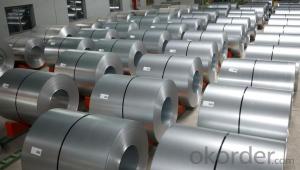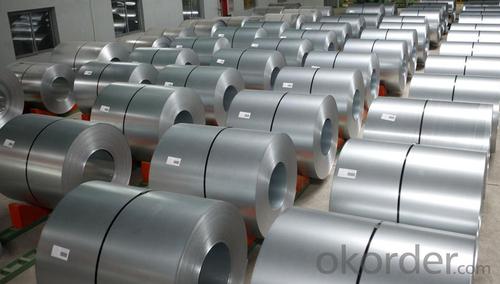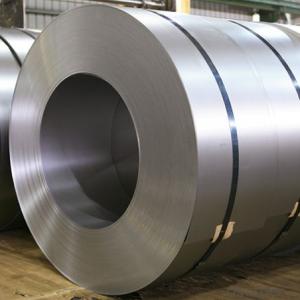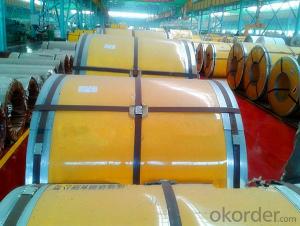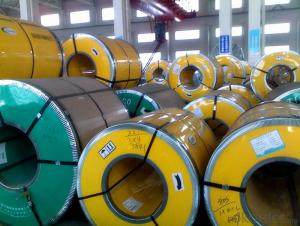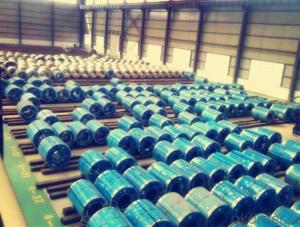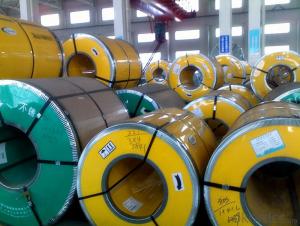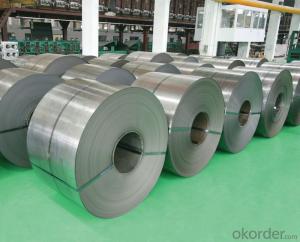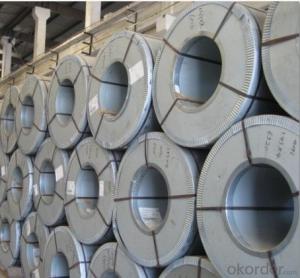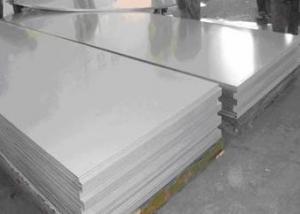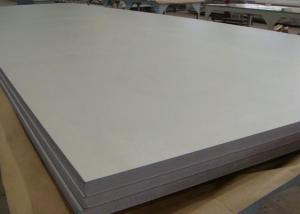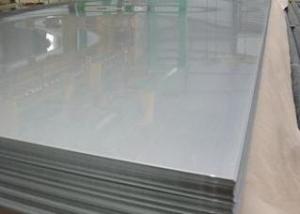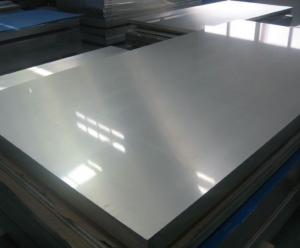Stainless Steel Coil Cold Rolled 304 2B With High Quality
- Loading Port:
- China main port
- Payment Terms:
- TT OR LC
- Min Order Qty:
- 400 m.t.
- Supply Capability:
- 5000 m.t./month
OKorder Service Pledge
OKorder Financial Service
You Might Also Like
Stainless Steel Coil Cold Rolled 304 With Good Quality
1.Structure of Stainless Steel Coil Cold Rolled 304 With Good Quality
Cold Rolled stainless steel Coil with good quality is one of the raw material of the cold
rolled stainless steel Coil, which can be used directly in many places. Stainless Steel
(Stainless Steel) is short for acid-proof Stainless Steel, resistant to weak corrosive
medium such as air, steam, water, or with a Stainless Steel grade.
2.Main Features of Prefabricated Steel Structure High Building Project
Polishing performance In today's society stainless steel products in production after
polishing the process commonly, when only a small number of products such as water
heaters, water dispenser tank don't need polishing. So this will require materials
polishing performance is very good. The factors influencing polishing performance
mainly include the following: 1) raw material surface defects. Such as scratch, pitting,
pickling, etc. (2) raw material problem. Hardness is too low, easy when polishing cast
light (BQ), and the hardness is too low, the surface easily when deep drawing appear
orange peel phenomenon, which affects the BQ. Relatively high hardness of BQ
is good. (3) after deep drawing products, great deformation area surface will be a
small black spots and RIDGING, thus affecting the BQ.
3. Stainless Steel Coil Cold Rolled 304 With Good Quality Images
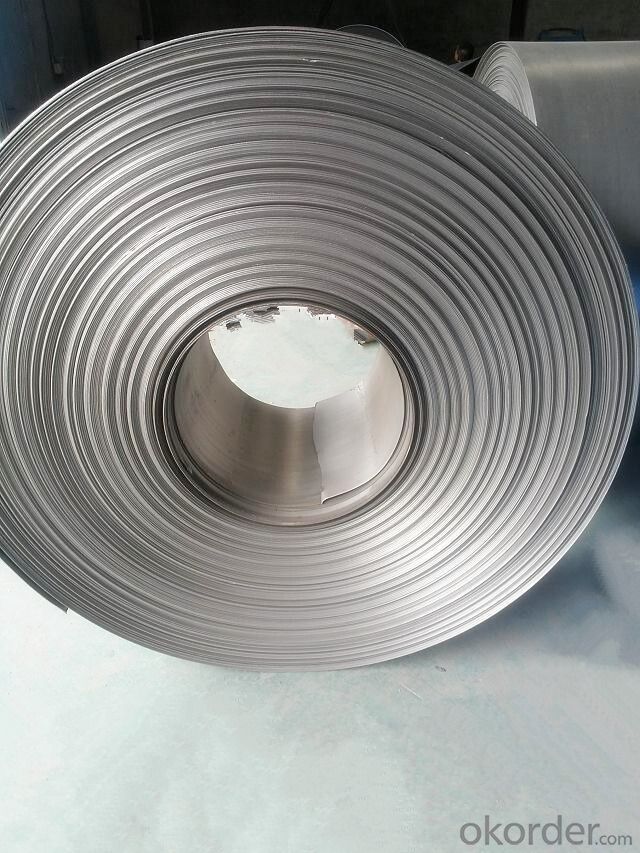
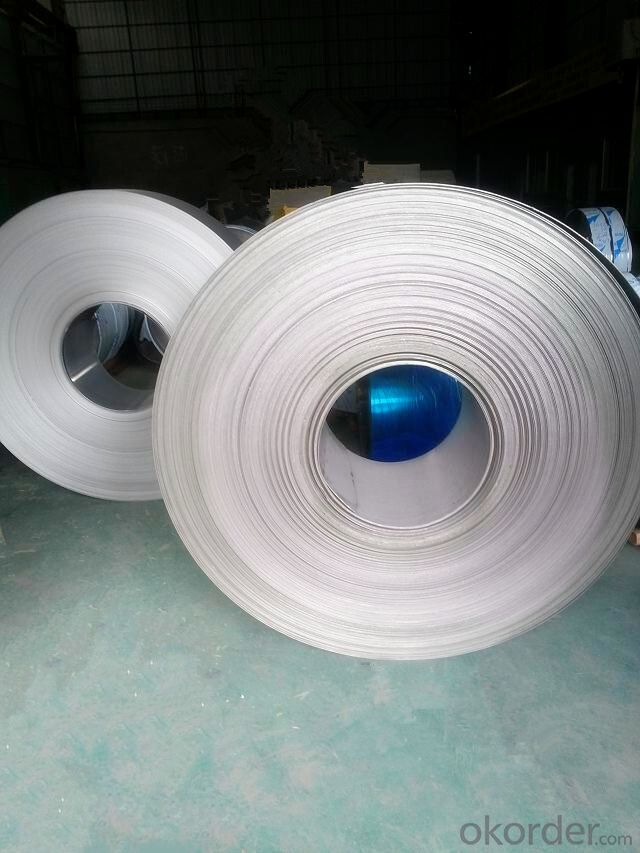
4. Stainless Steel Coil Cold Rolled 304 With Good Quality Specification
The word "stainless steel" is not merely refers to a pure stainless steel, but said more than
one hundred kinds of stainless steel industry, the development of each stainless steel has
good performance in their specific applications. The key to the success of the first is to
make clear purpose, and then determine the correct material. Related to architectural
construction applications usually only six types of steel. They contain 17 ~ 22% chromium,
good steel contains nickel. Add molybdenum can further improve the atmospheric
corrosion resistance, especially containing chloride atmospheric corrosion resistance.
Stainless steel often according to the state of organization can be divided into: martensite
steel, ferritic steel, austenitic steel, austenitic (two-phase) - ferrite stainless steel and
precipitation hardening stainless steel, etc. In addition, according to ingredients can be
divided into: chromium stainless steel, chromium nickel stainless steel and chromium
manganese nitrogen stainless steel, etc.
5. Applications of Stainless Steel Coil 304 With Good Quality
1. Kitchenware: tableware, cookware, Stoves…
2. Food packing: storage cans, food containers…
3. Construction: bridge, roofing, wall, decoration, bathroom accessories…
4. Precision instruments: electrical products, aerospace…
5. Others: automotive parts, machine building, chemical processing, farming…
6.FAQ of Stainless Steel Coil 304 With Good Quality
We have organized several common questions for our clients,may help you sincerely:
①How about your company?
A world class manufacturer & supplier of castings forging in carbon steel and alloy steel,
is one of the large-scale professional investment casting production bases in China,
consisting of both casting foundry forging and machining factory. Annually more than 800
0 tons Precision casting and forging parts are exported to markets in Europe,America an
d Japan. OEM casting and forging service available according to customer’s requirement.
②How to guarantee the quality of the products?
We have established the international advanced quality management system,every link
from raw material to final product we have strict quality test;We resolutely put an end to
unqualified products flowing into the market. At the same time, we willprovide necessary
follow-up service assurance.
③How is the packaging and delivery?
Standard export packing (Coil: waterproof paper + protective steel ring; Circle: wooden
box), or as your requirement and the delivery term is based on the project.
④How long can we receive the product after purchase?
In the purchase of product within 20 working days, We will arrange the factory delivery as
soon as possible. The specific time of receiving is related to the state and position of
customers. Commonly 20 to 40 working days can be served.
- Q: How is stainless steel strip manufactured?
- The process of manufacturing stainless steel strip includes shaping and cutting stainless steel sheets. To start, high-quality stainless steel alloy is selected, typically containing chromium and nickel, which provides durability and resistance to corrosion. The manufacturing process begins by feeding the stainless steel sheets into a rolling mill, where they pass through multiple sets of rollers. These rollers gradually reduce the thickness of the sheets, resulting in a thinner and longer strip. This rolling process is repeated multiple times to achieve the desired thickness and dimensions. After the rolling process, the stainless steel strip undergoes annealing to remove internal stresses and improve its ductility. Annealing involves heating the strip to a specific temperature and then slowly cooling it. This process enhances the mechanical properties of the strip and makes it easier to work with in subsequent manufacturing steps. Once annealed, the strip may undergo additional processes depending on the desired end-use. These processes may include pickling or passivation to remove impurities or oxides and improve the surface finish. The strip may also be coated or polished to enhance its appearance or protect it from corrosion. Finally, the strip is cut into the desired lengths using shearing or slitting machines. Shearing involves cutting the strip in a straight line to create individual pieces of the desired width. Slitting, on the other hand, involves cutting the strip into narrower widths, commonly used for applications such as flexible metal hoses or electrical components. Overall, precise control of rolling, annealing, and cutting processes is essential in the manufacturing of stainless steel strip to ensure the production of high-quality strips that meet required specifications and standards. These stainless steel strips are widely used in various industries such as automotive, aerospace, construction, and manufacturing due to their excellent corrosion resistance, strength, and versatility.
- Q: Can stainless steel strips be used in pressure vessels?
- Yes, stainless steel strips can be used in pressure vessels. Stainless steel is known for its excellent resistance to corrosion, high strength, and ability to withstand high pressure conditions. It is commonly used in various industries including oil and gas, chemical processing, and food and beverage. Stainless steel strips can be fabricated and formed into the desired shape to meet the specific requirements of pressure vessel applications.
- Q: Can 111 stainless steel strips be stamped or embossed for decorative purposes?
- Yes, 111 stainless steel strips can be stamped or embossed for decorative purposes. Stainless steel is a versatile material that can undergo various manufacturing processes, including stamping and embossing. Stamping involves pressing or shaping the stainless steel strip with a die, while embossing creates raised or recessed designs on the surface. Both techniques can be used to add decorative patterns, logos, or textures to the stainless steel strips, making them suitable for decorative applications in industries such as interior design, architecture, automotive, or consumer goods.
- Q: How does the price of stainless steel strips vary?
- The price of stainless steel strips can vary based on factors such as the grade of stainless steel, market demand and supply, production costs, and global economic conditions. Higher-grade stainless steel strips tend to have a higher price due to their superior quality and corrosion resistance. Additionally, fluctuations in raw material prices, such as nickel and chromium, can impact the overall cost of stainless steel strips. Market dynamics and competition also play a role in determining the pricing of stainless steel strips, with supply and demand imbalances affecting the prices.
- Q: What are the common finishes available for stainless steel strips?
- Stainless steel strips come in several different finishes that are commonly used. These finishes include: 1. Mill Finish: After production, stainless steel strips have a basic, dull appearance. This finish is often used in industrial applications where aesthetics are not the main concern. 2. Brushed Finish: Also known as a satin finish, this type of finish is achieved by brushing the stainless steel strips with an abrasive material. It creates a smooth and shiny appearance, making it suitable for decorative purposes like kitchen appliances or architectural elements. 3. Mirror Finish: This finish gives the stainless steel strips a highly reflective surface, similar to a mirror. It is achieved through a polishing process using finer grits until a smooth and shiny surface is obtained. Mirror finish is commonly used in decorative applications to achieve a luxurious appearance. 4. Embossed Finish: This finish involves creating texture on the surface of the stainless steel strips. It can be achieved through methods like stamping or rolling, resulting in raised or recessed patterns. Embossed finishes are often used to add visual interest and improve grip in applications like elevator doors or decorative panels. 5. Patterned Finish: Similar to embossed finishes, patterned finishes involve creating decorative patterns on the surface of the stainless steel strips. This can be done through processes like etching or laser engraving, allowing for intricate and customized designs. Patterned finishes are commonly used in architectural and interior design applications. 6. Colored Finish: Stainless steel strips can also be coated or painted to achieve different colors. This can be done through processes like powder coating or electroplating, providing a wide range of color options to meet specific design requirements. The choice of finish for stainless steel strips depends on the intended application and desired aesthetic appearance. Each finish has its own unique characteristics and advantages, making stainless steel a versatile material for various industries.
- Q: What industries commonly use stainless steel strips?
- Stainless steel strips are widely used in various industries due to their exceptional properties and versatility. One industry that commonly utilizes stainless steel strips is the automotive industry. These strips are used for manufacturing various automotive components such as exhaust systems, trim, and decorative elements due to their corrosion resistance, strength, and aesthetic appeal. Another industry that extensively uses stainless steel strips is the construction industry. These strips are employed in the construction of infrastructure, such as bridges, tunnels, and buildings, as they offer excellent structural integrity, durability, and resistance to environmental factors. Stainless steel strips are also utilized for roofing, siding, and cladding applications. The food processing and packaging industry also rely heavily on stainless steel strips. These strips are preferred for their hygienic properties, as they are easy to clean, resistant to bacterial growth, and non-reactive to food products. Stainless steel strips are used in the production of equipment like conveyors, mixers, and food storage containers. Furthermore, the medical and pharmaceutical industries heavily rely on stainless steel strips for their equipment and instruments. Stainless steel's biocompatibility, corrosion resistance, and ease of sterilization make it ideal for surgical tools, dental instruments, medical implants, and pharmaceutical manufacturing equipment. Other industries that commonly use stainless steel strips include the aerospace industry, where they are used for aircraft components, and the energy industry, where they are utilized in power plants, oil and gas processing, and renewable energy systems. Overall, the diverse range of properties offered by stainless steel strips makes them a popular choice across various industries, providing durability, corrosion resistance, hygiene, and strength, among other benefits.
- Q: How does stainless steel strip perform in corrosive environments?
- Stainless steel strip performs exceptionally well in corrosive environments due to its inherent resistance to corrosion. The presence of chromium in stainless steel forms a passive layer on the surface, which acts as a protective barrier against corrosive agents. This characteristic makes stainless steel strip highly durable and reliable in various corrosive conditions, ensuring minimal or no degradation over time.
- Q: What is the cost of stainless steel strips?
- The cost of stainless steel strips can vary depending on several factors such as the grade of stainless steel, the thickness and width of the strips, and the quantity being purchased. Additionally, market conditions and the supplier's pricing strategy can also affect the cost. Generally, stainless steel strips can range in price from a few dollars per pound to several hundred dollars per pound. It is recommended to contact various suppliers and provide them with the specific requirements to obtain accurate pricing information.
- Q: What are the common uses of stainless steel strips in the automotive stamping process?
- Stainless steel strips are commonly used in the automotive stamping process for various applications such as manufacturing automobile body panels, brackets, reinforcements, and structural components. These strips provide excellent corrosion resistance, durability, and strength, making them ideal for withstanding the harsh conditions and environmental factors experienced by vehicles.
- Q: What is the coefficient of expansion for stainless steel strips?
- The coefficient of expansion for stainless steel strips varies according to the particular grade and composition of the stainless steel. On average, the linear expansion coefficient for stainless steel is approximately 17-19 x 10^-6 per degree Celsius. It is crucial to bear in mind that various types of stainless steel may possess slightly dissimilar expansion coefficients, thus it is always advisable to refer to the manufacturer's specifications for the specific grade of stainless steel being utilized.
Send your message to us
Stainless Steel Coil Cold Rolled 304 2B With High Quality
- Loading Port:
- China main port
- Payment Terms:
- TT OR LC
- Min Order Qty:
- 400 m.t.
- Supply Capability:
- 5000 m.t./month
OKorder Service Pledge
OKorder Financial Service
Similar products
Hot products
Hot Searches
Related keywords
